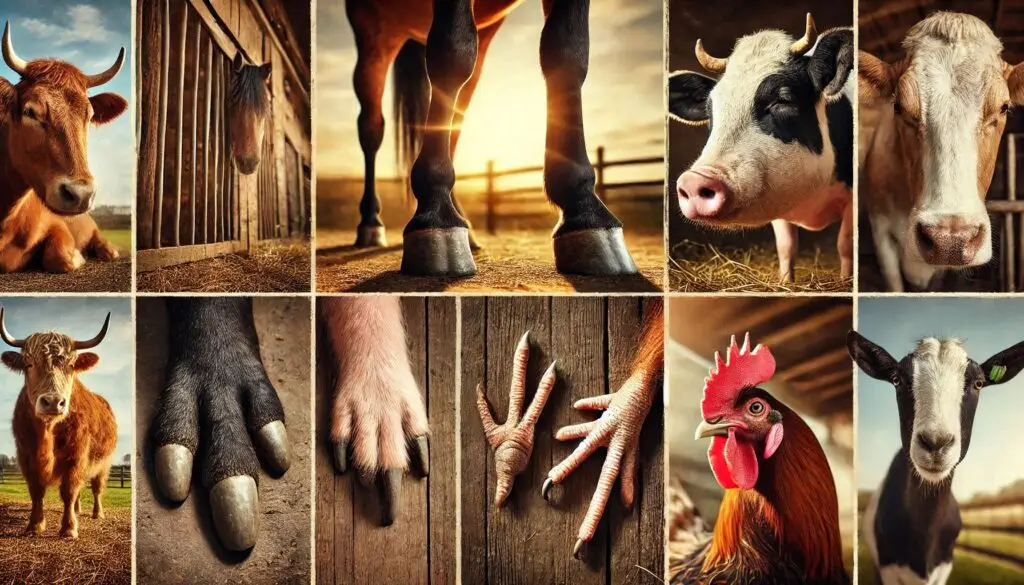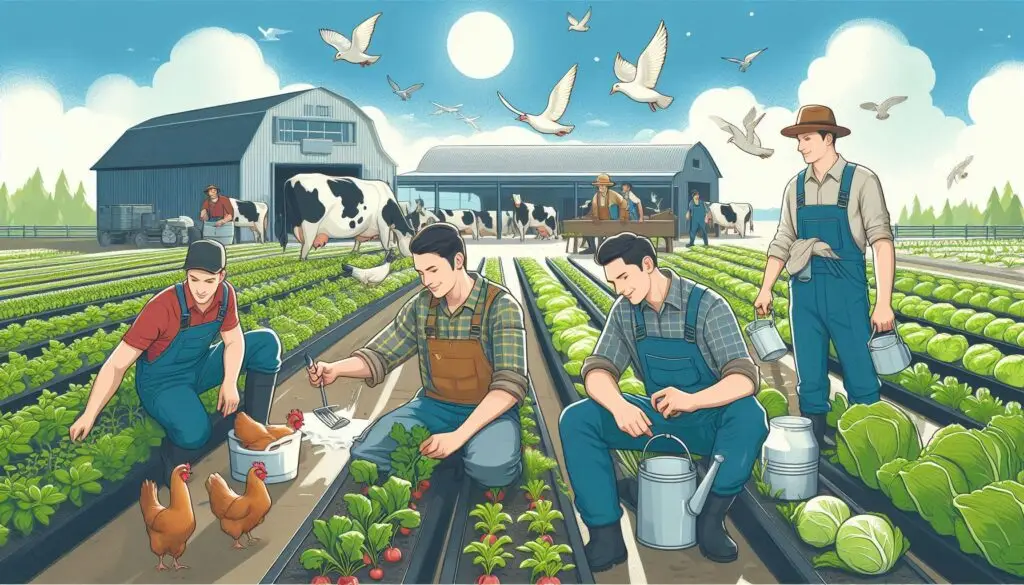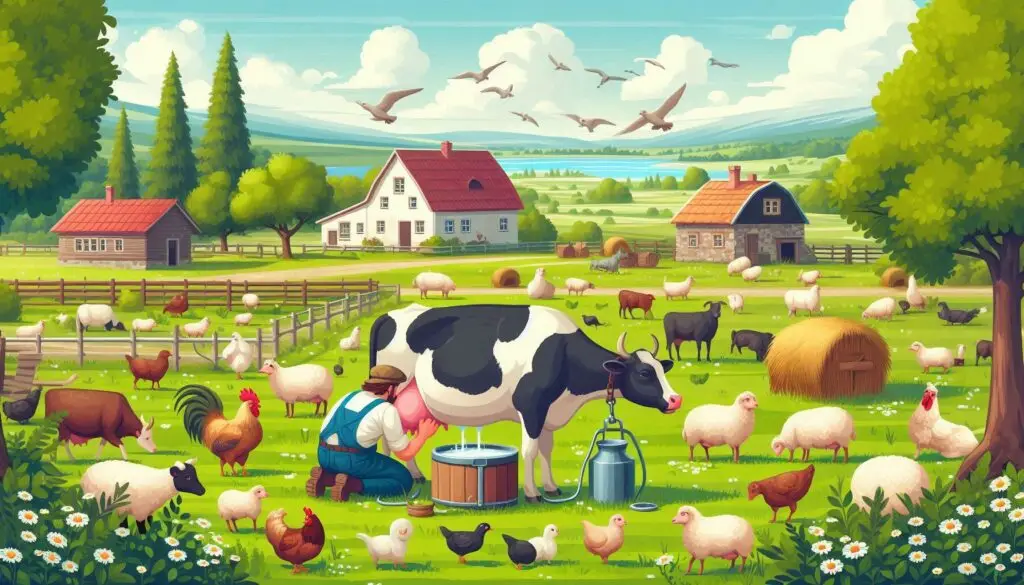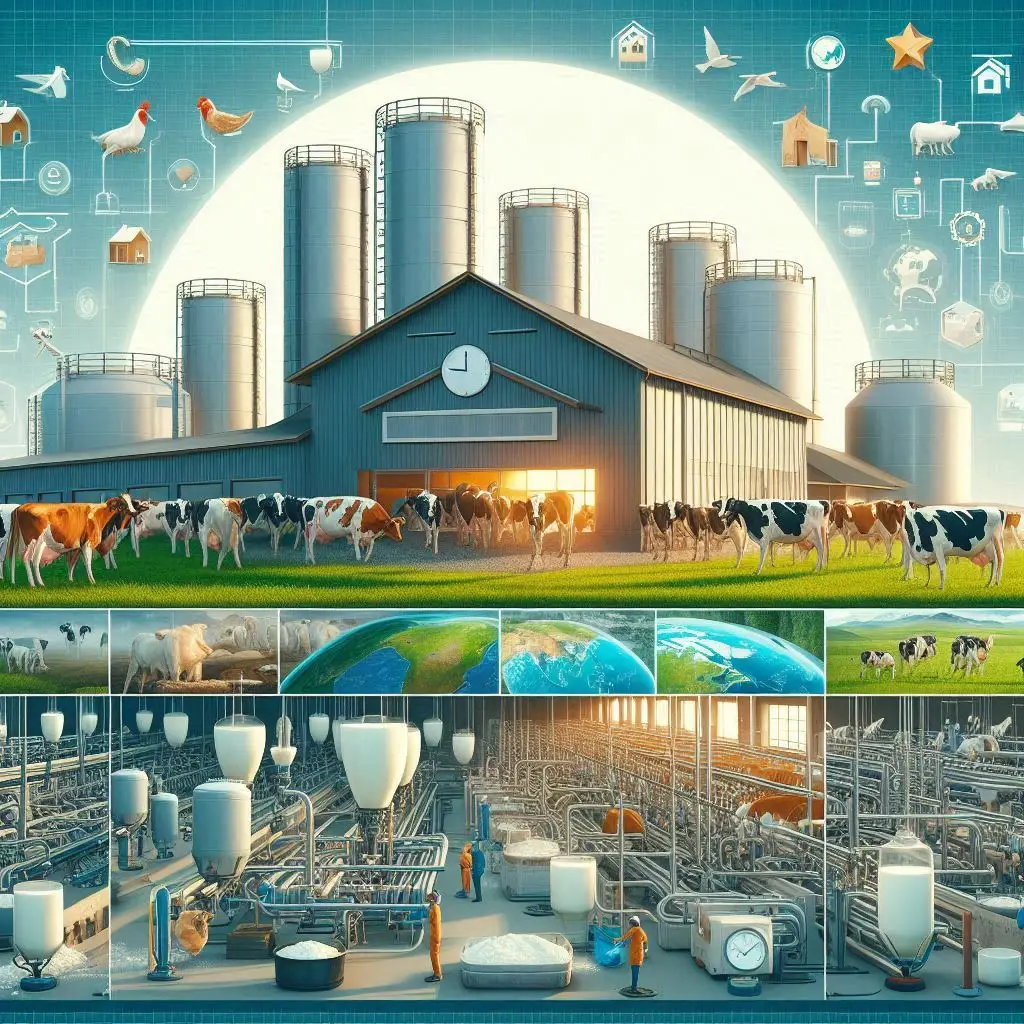Hooves and Claws in Farm Animals

What Are Hooves?
Definition of Hooves
Hooves are hard coverings that protect the toes of certain mammals. They consist mainly of keratin, the same material found in human nails. Hooves provide a strong surface for weight-bearing animals. They also help with shock absorption during movement.
Structure of Hooves
Hooves have two main parts:
- Unguis: The hard outer shell.
- Subunguis: The softer pad underneath that helps absorb shock.
This structure is essential for animals that need to support their weight on uneven or soft ground.
Types of Hooved Animals
Hooved animals fall into two main categories based on their toe structure:
Even-Toed Ungulates (Artiodactyla)
These animals have an even number of toes. Common examples include:
- Cattle: Cows are crucial for dairy and beef production. They have cloven hooves that help them balance on various terrains. For more information on cattle care, check out this guide on cattle management.
- Sheep: Sheep also have cloven hooves. Their feet allow them to navigate rocky landscapes easily.
- Goats: Like sheep, goats have split hooves. They are agile climbers and can traverse steep areas.
- Pigs: Pigs possess cloven hooves as well. They are often found in muddy environments where their feet help them move easily.
Odd-Toed Ungulates (Perissodactyla)
These animals have an odd number of toes. Notable examples include:
- Horses: Horses have a single toe encased in a hoof. This structure allows for speed and agility. If you’re interested in horse hoof care, visit this comprehensive resource on horse hoof health.
- Rhinoceroses: Rhinos have three toes per foot. Their hooves support their massive weight while allowing for movement through dense vegetation.
What Are Claws?
Definition of Claws
Claws are pointed structures found at the ends of the toes in certain mammals. Unlike hooves, claws can be more flexible and are often used for grasping or climbing.
Structure of Claws
Claws are made of keratin but lack the hard outer shell characteristic of hooves. This allows them to serve different functions based on the animal’s needs.
Animals with Claws
While most traditional farm animals have hooves, some may exhibit claw-like features:
- Goats: Goats have two claws on each foot that enhance their ability to climb rocky terrains.
- Pigs: Pigs also show claw-like structures alongside their cloven hooves. For further reading on pig anatomy, you can refer to this resource on pig biology.
Differences Between Hooves and Claws
Functional Differences
The primary difference between hooves and claws lies in their function:
- Hooved Animals: These animals rely on their sturdy hooves for support while walking or running over various surfaces.
- Clawed Animals: Animals with claws often use them for grasping objects or climbing.
Adaptations to Environment
The type of foot structure an animal has often reflects its environment:
- Hooved Animals: These animals thrive in open fields or pastures where they can graze.
- Clawed Animals: These creatures may inhabit rocky or forested areas where climbing is necessary.
Care and Management of Hooved Animals
Proper care for both hooves and claws is essential for maintaining animal health. Here are some key practices:
Regular Hoof Trimming
Regular hoof trimming is crucial for preventing overgrowth and ensuring proper alignment. For example:
- Dairy Cows: It is recommended to trim cow hooves twice a year.
- Horses: Horses typically require trimming every six to eight weeks. Neglecting hoof care can lead to serious issues such as lameness or infections. For more details on hoof trimming techniques, visit this hoof care guide.
Health Monitoring
Monitoring the health of hooved animals is vital. Conditions such as hoof-and-mouth disease can significantly impact livestock productivity. Regular veterinary check-ups help identify potential issues early.
Maintaining Cleanliness
Keeping the living environment clean is essential for preventing hoof problems. Muddy or dirty conditions can lead to infections like foot rot. Ensure that barns and pens are well-maintained.
Care and Management of Clawed Animals
While less common than hoofed animals, those with claws also need proper care:
Regular Inspection
Inspecting claws regularly helps identify any abnormalities or injuries early on. Look for signs of infection or overgrowth.
Proper Nutrition
A balanced diet contributes to healthy claw development. Ensure that animals receive adequate vitamins and minerals necessary for strong claws.
Safe Living Conditions
Provide safe environments free from hazards that could injure claws. Avoid sharp objects or rough surfaces where possible.
Conclusion
Understanding the differences between hooves and claws in farm animals is crucial for effective management practices. Each type has unique adaptations that serve specific functions related to movement, balance, and environmental interaction. By implementing proper care practices, farmers can maintain the health and productivity of their livestock. For more information on livestock management practices, consider reading this livestock management guide.
More from Veterinary Anatomy:
Corpus Luteum






Throughout the great scheme of things you actually secure an A+ just for hard work. Exactly where you lost me personally ended up being in the specifics. You know, people say, details make or break the argument.. And that could not be more correct in this article. Having said that, allow me say to you just what exactly did work. The authoring is certainly really engaging and this is probably the reason why I am taking an effort in order to opine. I do not really make it a regular habit of doing that. Second, whilst I can easily notice the leaps in reasoning you come up with, I am not necessarily convinced of how you seem to connect the points that produce the conclusion. For the moment I will yield to your position but wish in the foreseeable future you connect the dots better.
I like assembling useful info, this post has got me even more info! .
Amazing! This blog looks exactly like my old one! It’s on a completely different topic but it has pretty much the same page layout and design. Outstanding choice of colors!
my website … http://Boyarka-Inform.com/
Buy elite quality proxies – Completely unknown ELITE private proxies with TOP amount of safety only from DreamProxies.com